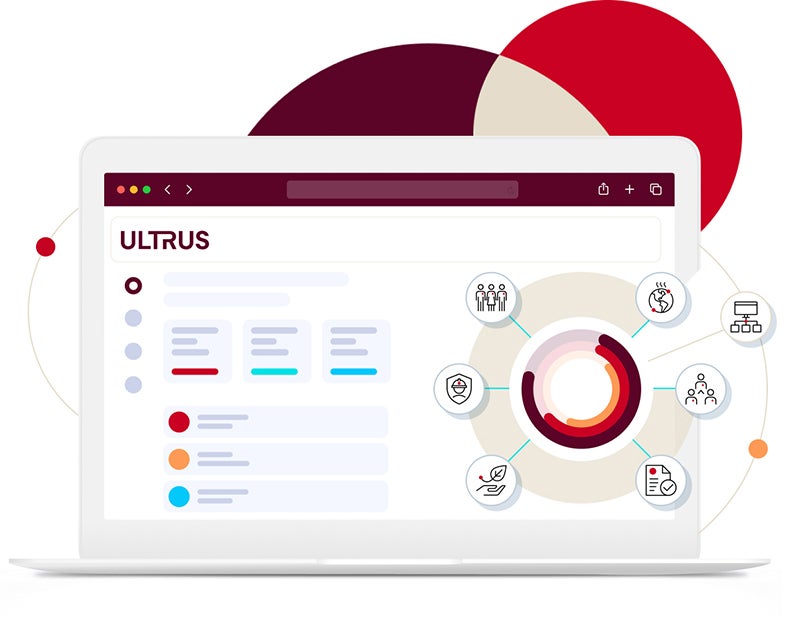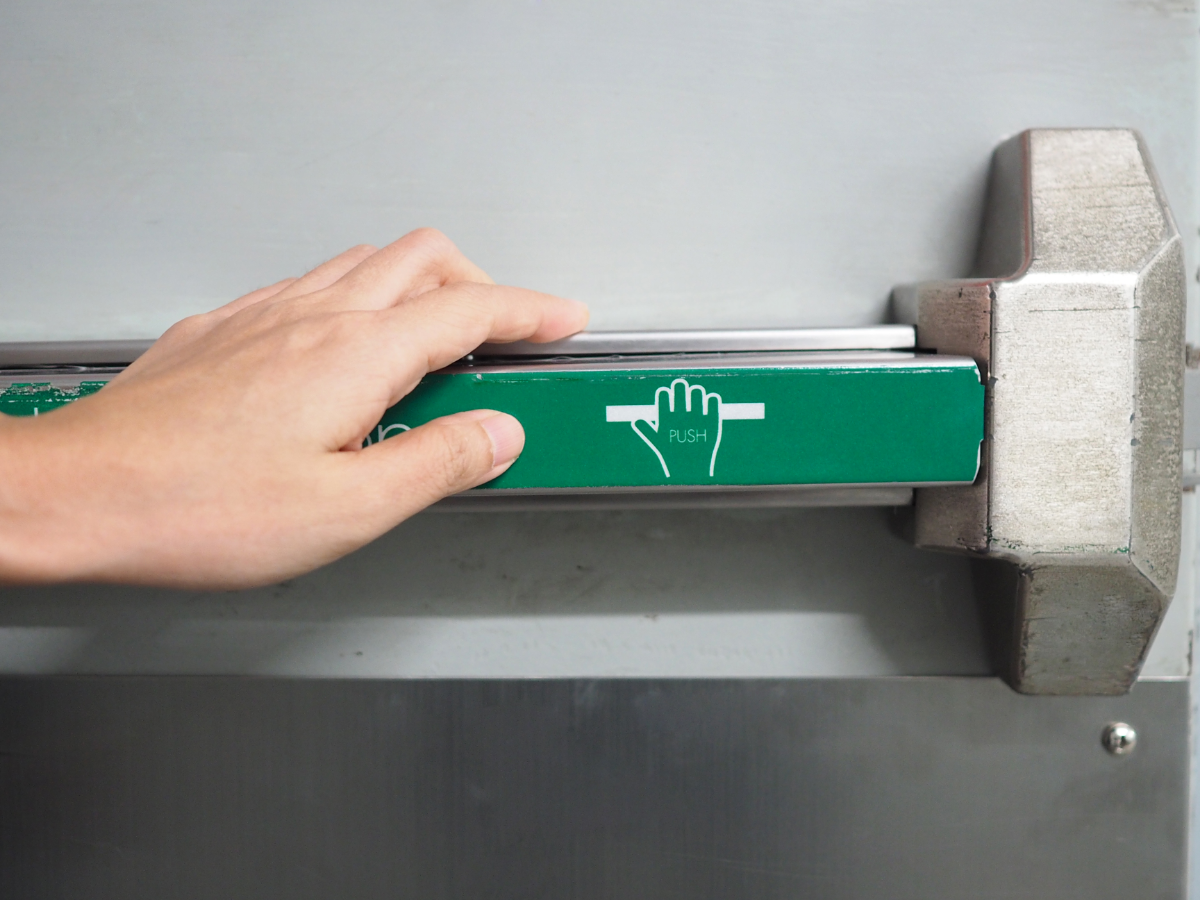Authors:
Michael Nicasio – Principal Engineer, Fire Containment and Fenestration, Built Environment
William E. Denton – Sr. Staff Engineering Associate, Specialty Field Engineering
Matthew Schumann – Industry Manager, Building Materials, Built Environment; Distinguished Member of Technical Staff, William Henry Merrill Society
UL Certified (Listed) fire door assemblies and their components are considered opening protective systems and are a critical part of the passive fire protective features of buildings. Certified fire door assemblies are fire tested in a laboratory to determine compliance with applicable standards as referenced in the model codes and are installed in accordance with applicable building and fire codes, installation standards, and the manufacturer’s installation instructions. The most common fire test standard for evaluating and certifying these products and assemblies are UL 10C, the Standard for Positive Pressure Fire Tests of Door Assemblies, and UL 10B.
Fire doors installed in buildings require field review to confirm code compliance and proper installation. Typical findings include missing certification labels and modifications to the original fire door assemblies. National Fire Protection Association (NFPA) 80, Standard for Fire Doors and Other Opening Protectives, has requirements for annual fire door inspections aimed at continued compliance with the requirements for opening protective systems. UL Solutions offers fire door inspection and fire door field evaluation services to address these situations. This article explains the differences and highlights the benefits of these UL Solutions services.
Fire door inspection
For UL Solutions’ fire door inspection program, a trained and experienced UL Solutions inspector conducts an inspection of installed fire doors in accordance with NFPA 80 to satisfy the annual inspection requirements in the jurisdiction-adopted edition of the International Fire Code (IFC), NFPA 1 Fire Code, or NFPA 101 Life Safety Code. These inspection and maintenance requirements are found in chapter 7 of the IFC, chapter 12 of NFPA 1 and chapter 8 of NFPA 101. All ICC and NFPA codes included references to NFPA 80 for specific installation, testing and maintenance requirements. UL Solutions delivers a report at the conclusion of the inspection that identifies any observed deficiencies in accordance with NFPA 80 requirements. With a fire door inspection, there is no application of a label or judgment made by UL Solutions on alterations or modifications made to the door or frame.
UL Solutions fire door inspections do not field certify any modifications or additions of components, such as locking hardware, to the fire door assembly that could have an impact on the fire door performance and could potentially jeopardize its fire protective performance. Instead, UL Solutions offers field evaluation services to address this situation.
Fire door field evaluation
Our fire door field evaluation program consists of a trained and experienced UL Solutions representative surveying a specific, non-labeled or modified labeled fire door assembly to determine if the door continues to be compliant with the certification requirements. The evaluation process includes an inspection of the fire door assembly construction to determine operability of components and the assembly along with nondestructive testing, such as hardware functionality and door condition issues. If the fire door assembly is found to be compliant with the construction and installation requirements, the UL Solutions representative applies the UL Evaluated Label to the product.
This service is delivered only by a UL Solutions engineer. Fire door ratings are normally not adjusted via a field evaluation, e.g., increased or decreased from the original rating unless reviewed and deemed to be acceptable construction for the rating by senior UL Solutions fire door engineering staff based on data and engineering judgment. The field evaluation report will disclose any findings that may have prevented the application of a UL Evaluated Label to any part of the assembly. A second evaluation is usually conducted to verify discrepancies in the initial report have been properly corrected. If corrected, a UL Evaluated Label may be applied, and another report may be issued. Both the customer and the code authority receive copies of these reports.
In summary, it is important to understand the differences, scope and limitations of actual fire tests conducted in an approved laboratory and those conducted as field inspections or field evaluations. Each of these service offerings should be delivered by a trained and experienced representative of the certification organization. These accredited programs exist to accommodate field concerns regarding the installation and maintenance of a fire door assembly and should not be considered an alternative for laboratory testing, manufacturing surveillance or accredited third-party certification that is covered by the definition of “listed” in ICC and NFPA model codes.
The primary aspects of these two UL Solutions programs are summarized below:
- UL Solutions uses only full-time, qualified engineering staff to complete UL Solutions field inspections and field evaluations.
- For both programs, UL Solutions field engineers apply their technical knowledge and the expertise of our knowledgeable fire door testing and certification conformity assessment team.
- UL Solutions inspection activities for fire doors utilize our established methods for product surveillance, helping to ensure the inspection and review are consistent with UL Solutions Follow-Up Services at UL Certified fire door manufacturer factory locations around the globe.
- Destructive inspection and testing are not conducted in association with these field programs, as it could jeopardize the fire protective performance of a door assembly.
- UL Evaluated Labels applied to the door assemblies align with UL Solutions certification allowances. This means ratings and applications will be consistent with what is permitted by model building and fire codes, UL Standards and product certification requirements used for fire door and fire door frame manufacturers.
- UL Solutions will only apply UL Evaluated Labels for the hourly rating of the fire door assembly or component(s) based on the published UL certification information. For example, if the field evaluation determines the nonlabeled fire door assembly is a UL Certified 90-minute fire door, the UL Solutions field representative will apply a UL Evaluated Label for 90 minutes only. Fire door ratings should not be adjusted through field evaluations unless reviewed and approved by UL Solutions engineering, as noted above.
- It is challenging to evaluate wood fire doors properly in the field. UL Solutions will only field evaluate a wood fire door when there is a similar UL Certified wood door bearing a UL Mark also present in that building and the details of the door(s) are determined to be the same. Many wood doors may not be eligible for a UL Evaluated Label if there is delamination, damage or chipping of the door surfaces and edges.
- UL Solutions field evaluation services are the appropriate option to evaluate modifications or changes to a fire door assembly due to modifications from the original certification, change to hardware, wall construction, etc.
- Both programs provide a written report that summarizes the results of the inspection or field evaluation and can be added to the fire protection record inventory of the building.
More information on fire door inspection service may be found at the following link:
https://www.ul.com/offerings/fire-door-inspection-service
More information regarding UL Solutions field evaluation services may be found at the following link:
https://www.ul.com/services/field-evaluations


